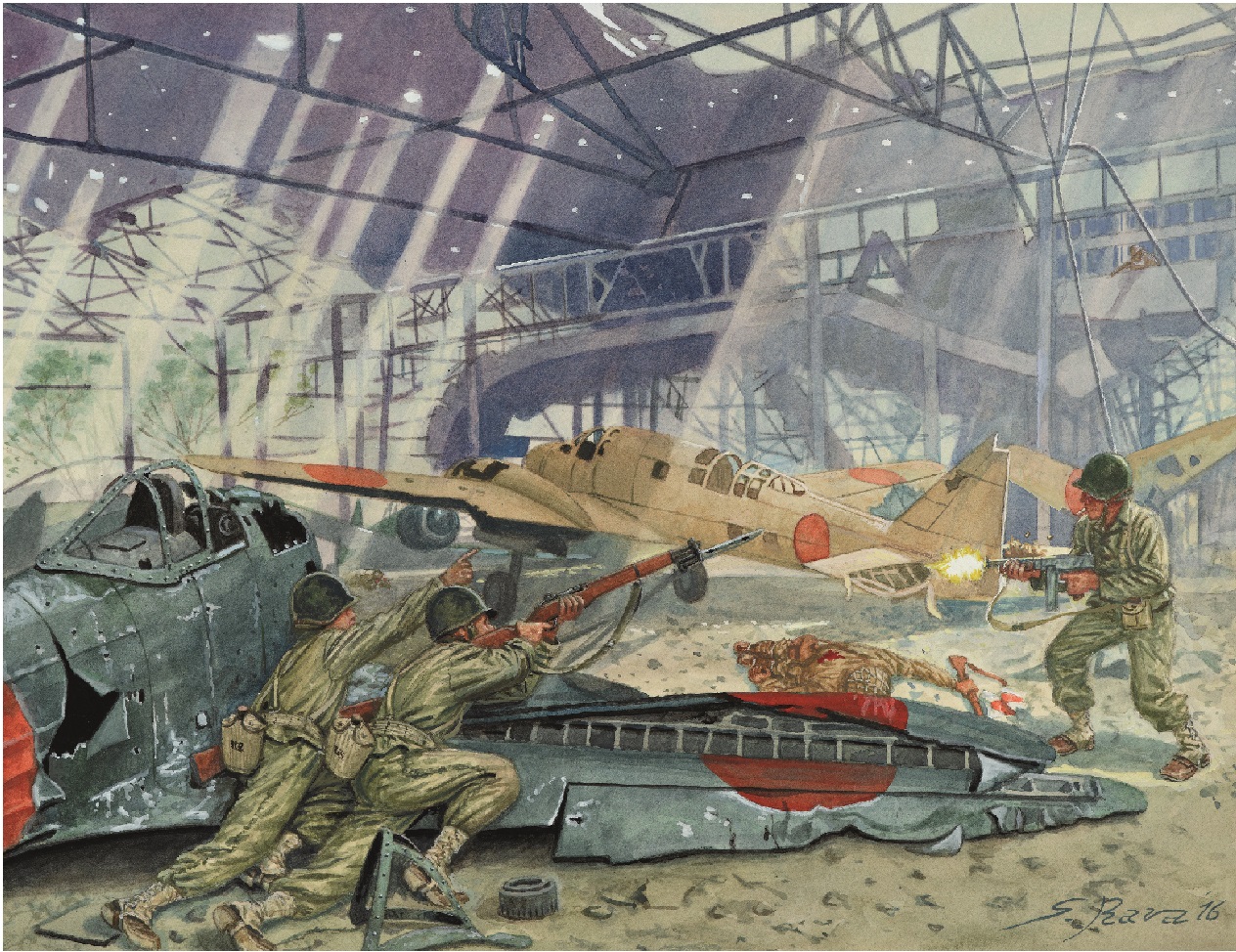Ahead of the release of Luzon 1945, author Clayton Chun gives a brief insight into the subject of his latest book, which focuses on General MacArthur's return to the Philippines. You can read more about General MacArthur's time in the Philippines by clicking here.
By late 1944, the Allies had pushed the Imperial Japanese military out of Leyte and had advanced through the Central Pacific area. Victory seemed in sight, but how should they proceed? Many in Washington believed the only way to defeat Tokyo was through an amphibious invasion of the home islands. Admiral Chester Nimitz was pushing north through the Caroline and Marianas Islands. If Nimitz continued his offensive, this would lead directly to Japan. Meanwhile, General Douglas MacArthur slowly marched through New Guinea, but had recently made good on a prior promise to return to the Philippines and was on Leyte. From Leyte, MacArthur could land on Luzon, the main island of the Philippines and liberate the Filipino population and any held Allied prisoners of war. However, the war was not constrained only to the Pacific. In Europe, Dwight Eisenhower and the Allied forces in Western Europe appeared to be on the verge of driving to Germany. Soviet forces celebrated the retreat of German forces from the USSR and Berlin could not stop the Soviet juggernaut. However, America was still fighting a dangerous, albeit battered, Germany. Later, Adolf Hitler demonstrated his ability to surprise American and British commanders in Ardennes. War with Germany was still consuming massive amounts of manpower and supplies. Nimitz and MacArthur were still forced to rely on limited forces to defeat Imperial Japan.
Given the uncertainty of resources, America could only provide limited military forces to the Pacific. Could this stymie either Nimitz or MacArthur’s future movements? Imperial Japanese Army and Navy personnel had fought with great determination against all Allied efforts to advance. In addition, as the Allies clawed nearer to Tokyo, Japanese forces put up more dogged defensive measures. This affected future Pacific theater planning on how best to proceed. Perhaps President Franklin Roosevelt and the American Joint Staff might have to slow activities in the Pacific? This created several strategic questions; Should MacArthur bypass his intended move to Luzon and instead use his Southwest Pacific units to take Formosa? Formosa offered the opportunity to block entry of Japan’s sea lanes of communications to her prize conquests in Southeast Asia and its mineral and food supplies that were needed to fight the war. Formosa also allowed the United States Army Air Forces to create bases to conduct strategic bombardment missions against Honshu. Allied forces could also support operations against the Japanese in China. MacArthur could take Luzon later.
 THE FIGHT FOR CLARK FIELD, JANUARY 29, 1945
THE FIGHT FOR CLARK FIELD, JANUARY 29, 1945
MacArthur vehemently opposed the Formosa option. MacArthur’s position was to conduct an amphibious invasion against Luzon that would also limit Japanese access to Southeast Asia. Leaving an unconquered enemy in MacArthur’s rear was also dangerous. An Allied controlled Formosa could be cut-off by the Japanese from Luzon. More importantly, leaving Luzon in Tokyo’s grip would also prolong the Japanese occupation under which the Filipino population suffered greatly. Political optics might also show that the Americans had castaway the Filipinos and lend credence to Tokyo’s claims that Washington did not want to sacrifice its military members to liberate them. Ultimately, MacArthur convinced Washington that Luzon was the next logical target. After taking Luzon, MacArthur could prepare for Japan’s invasion. A swift American victory would alter events in the Pacific.
MacArthur faced a well-known opponent on Luzon, General Yamashita Tomoyuki. Yamashita was the “Tiger of Malaya” who had struck like lightning and taken the fortress of Singapore in 1942. A superb strategist and expert in operational art, Yamashita knew there was little he could accomplish since the cream of his ground forces had been crushed at Leyte. Fighting a final battle could defeat the Americans, but the probability of a Japanese victory was slim in the face of Allied superiority. Instead, Yamashita sought to delay the Americans and chose to fight a battle of attrition. If he could avoid major pitched battles and linger in Luzon’s mountains, then he would “win.” Every day that he could tie down American divisions was an extra day that the Imperial Japanese Army and Navy could prepare defenses on their home islands.
Luzon would not become an easy nor fast victory for MacArthur. The campaign would involve a number of situations that the American forces had never faced in New Guinea or on the many islands fought over against the Japanese. MacArthur would conduct amphibious landings, airborne operations, mountain fighting, guerilla activities, raids to free prisoners of war, urban operations, and more. American commanders faced almost fanatical enemy operations that destroyed any possibility of ending the campaign fast. U.S. Army units faced a slow, painful campaign that forced their leadership to adapt and find ways to overcome a determined foe.
Luzon offers many insights to the complexity of war. Differing strategies, objectives, and capabilities combined with a tough physical environment created a tough fight for all involved. Luzon was a campaign that was heighted by its ferocity, but also the variety of combat activities.
Chun's latest Campaign book, Luzon 1945, is now available to pre-order and will be released 20th April 2017.

Comments
You must be logged in to comment on this post. Click here to log in.
Submit your comment